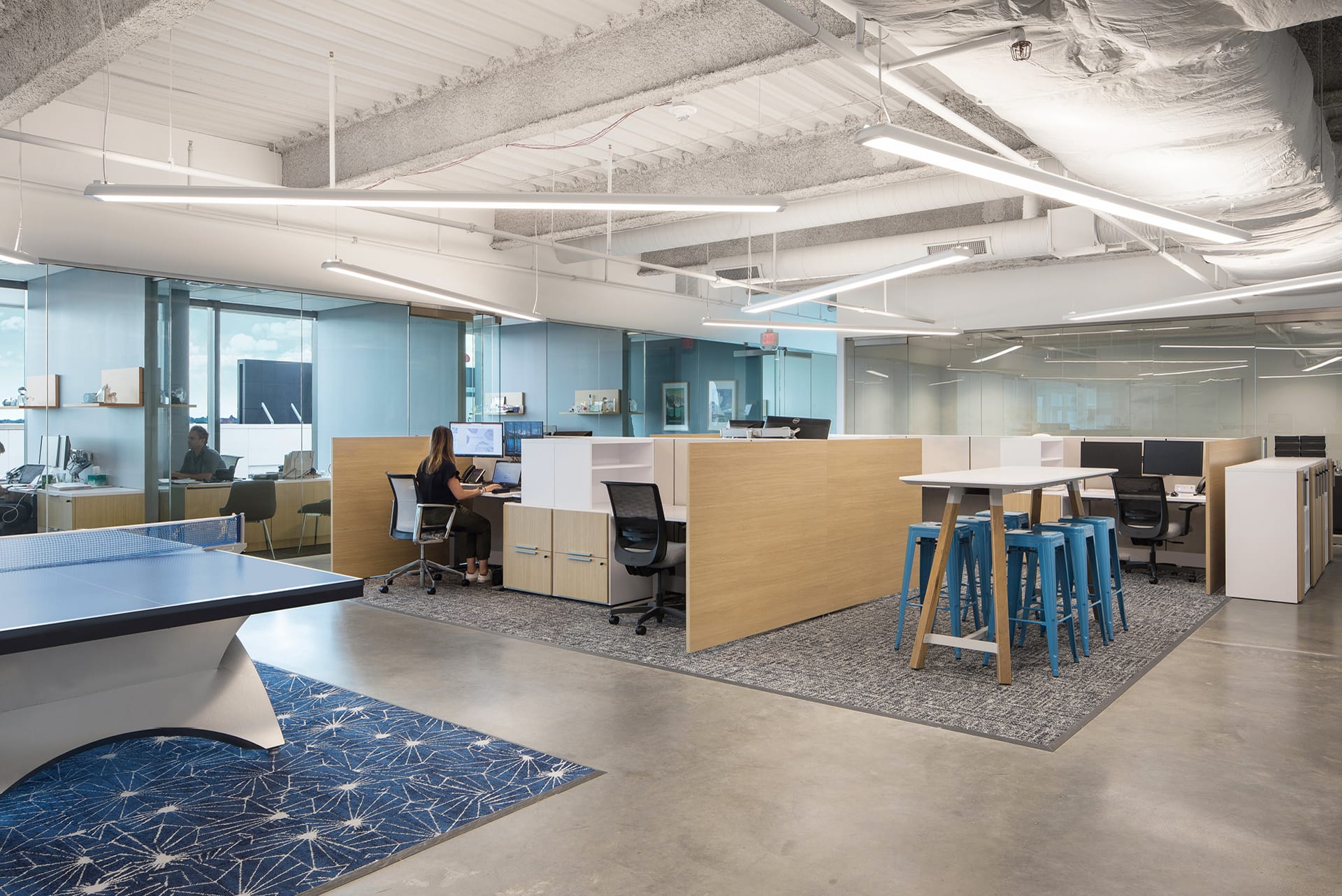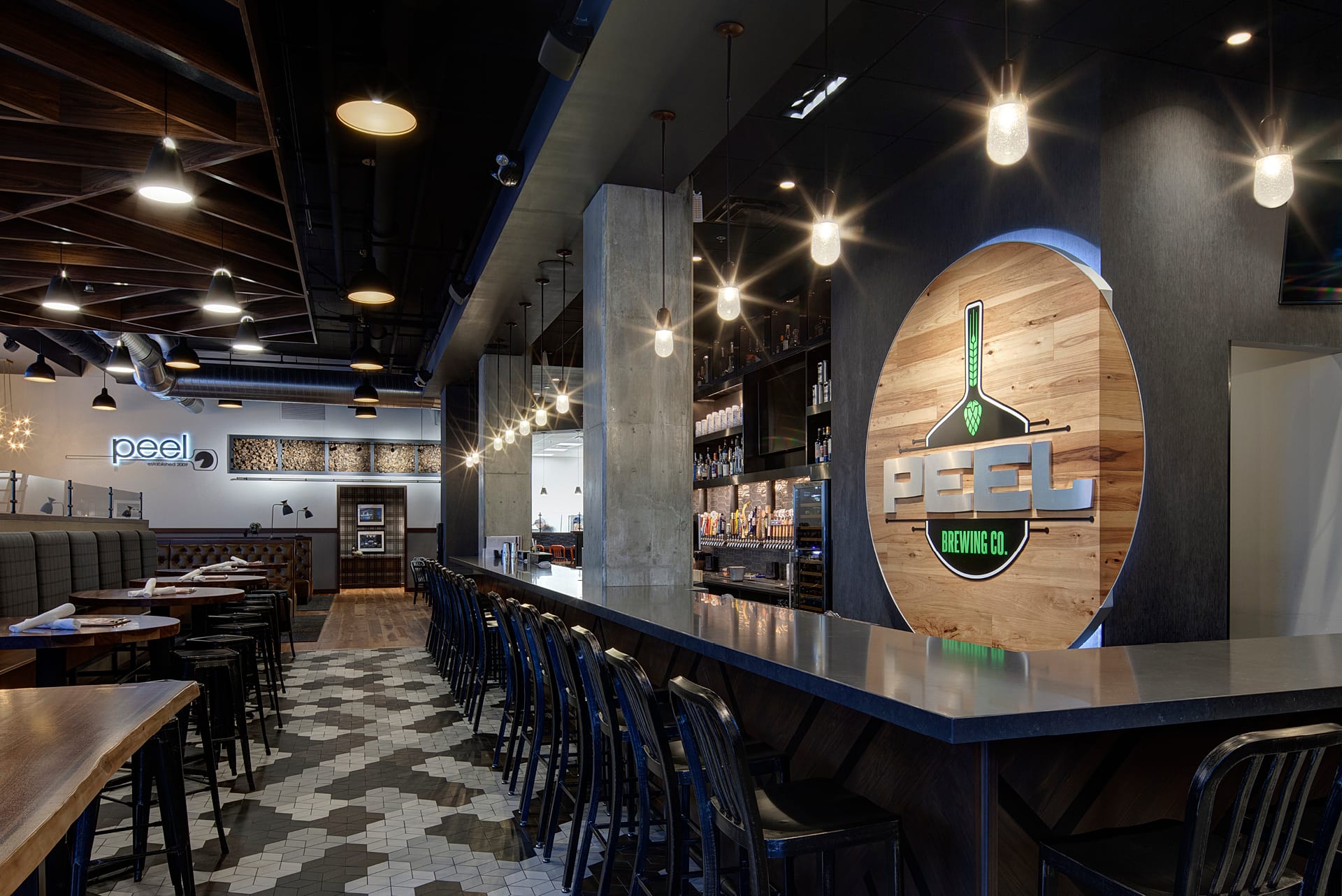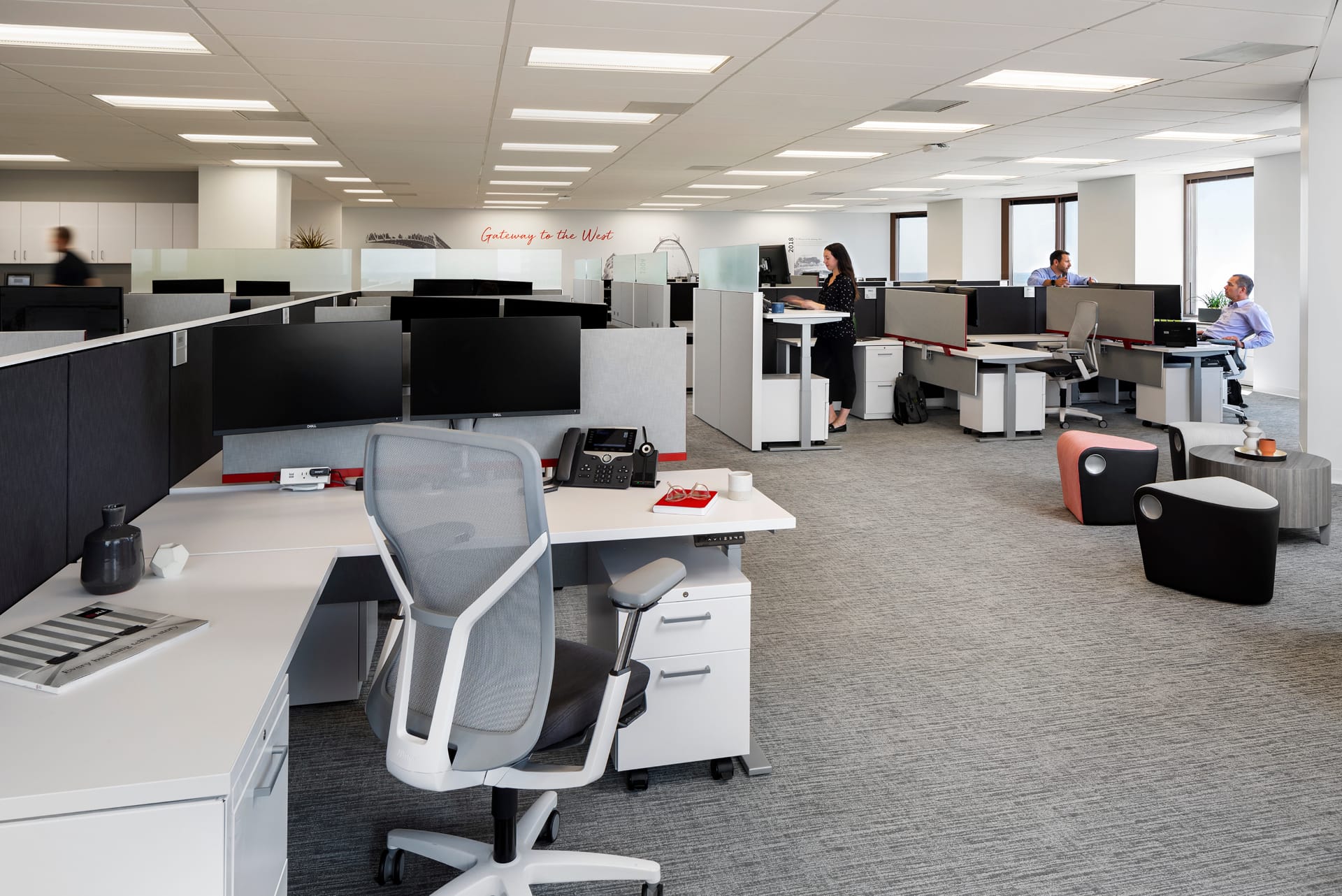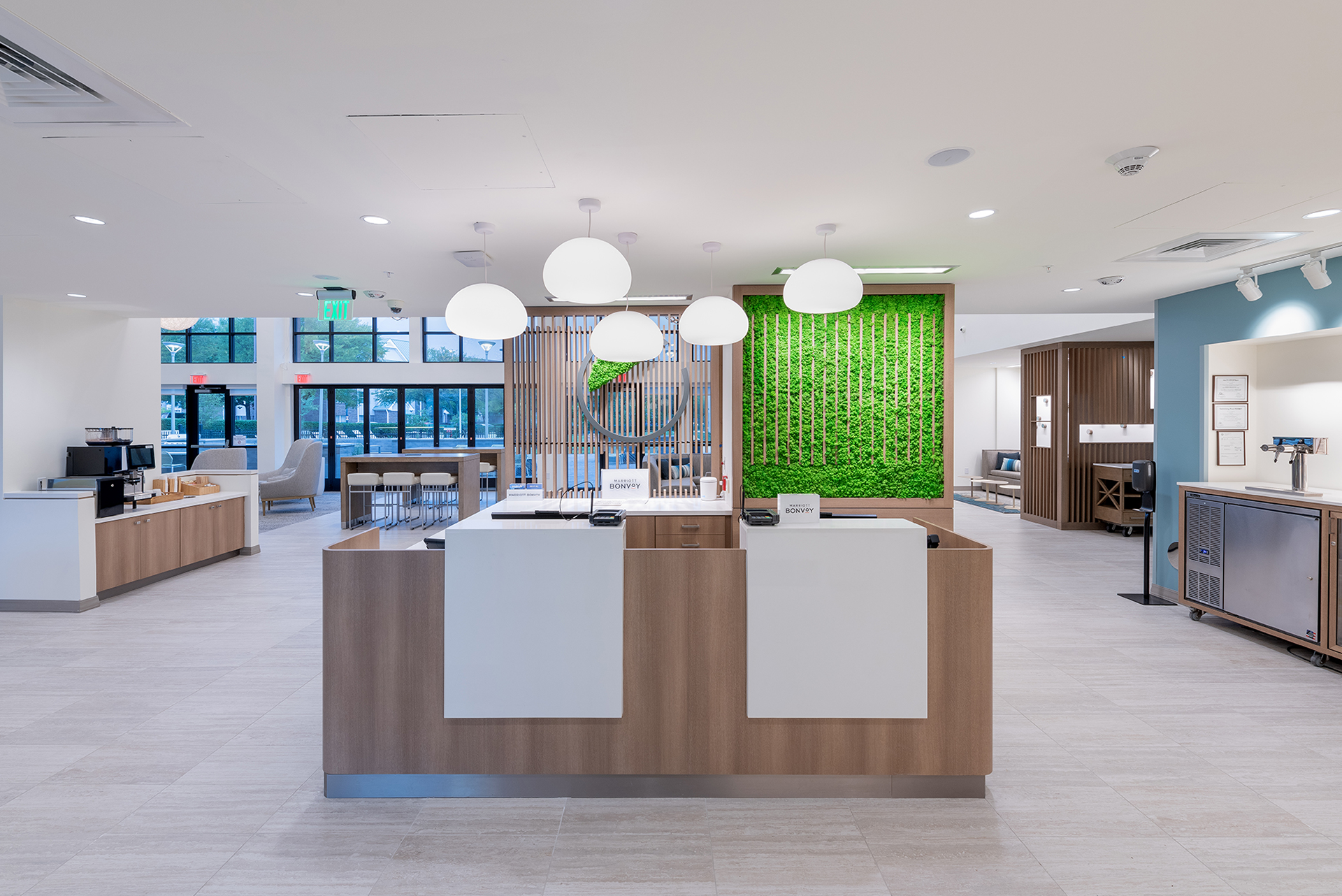Gray Intel
Want to learn more about our impactful projects, news-worthy insights and trailblazing people? Take a moment to explore the latest news from the Group including media coverage, case studies, staff announcements, community involvement, events and more.
5 Ways Interior Design Can Improve Health + Create Happier Spaces
by Jenny Johnson
Creating a space that positively impacts people and the community is at the core of our design philosophy at Gray. Developed in 2013, the WELL Building Standard improves people’s lives by creating spaces that enhance occupant health and quality of life. To create an environment that improves the mind, body and performance of all its occupants, Gray interior designer and WELL AP, Jenny Johnson, makes a concerted effort to incorporate WELL Building Standards in her design practices.
“WELL building design is ideal, but pursuing full project certification truly needs to be embraced by all stakeholders involved. It is definitely a worthwhile undertaking, even though getting everyone on the same page can be challenging,” says Jenny. “I tend to default to integrating WELL practices within any project design, even when it is not requested. It seems only natural to apply its intuitive criteria so that a space may be of utmost benefit to both the occupants and the client.”
While spaces must meet specific standards to become a WELL Certified project, Jenny believes there are five ways you can easily incorporate the fundamentals of the WELL standard to improve occupant health and wellbeing in any environment:
Natural Light. Integrating natural light into a space helps regulate the body’s natural circadian rhythms and improves mood and productivity and aesthetics. “Utilizing both interior and exterior glass can maximize the reach of natural light in a space,’ says Jenny. “Skylights in an atrium or shared spaces can brighten common areas and provide a much-needed respite for employees with limited access to windows. Alternatively, ancillary spaces can be consolidated to the interior of the building so that workspaces have access to exterior glazing.”
Photo Right: Daylighting was a driving factor in the design of Icon Mechanical, with three large skylights running along the center of the building. Natural light from the skylight and exterior windows was able to permeate through both the two-story atrium space and both stories of the occupied space.
Active Furnishings. Furniture selection is an integral part of the design process. Furniture should accommodate the occupant’s day-to-day tasks and maximize productivity, ease tension and reduce burnout. The WELL Building Standard takes it a step further, encouraging the use of height-adjustable worksurfaces or treadmill desks. “It’s fortunate that many clients and end users are requesting height-adjustable worksurfaces as a standard in recent years. Creating opportunities for a more active environment reduce sedentary behavior while allowing a customizable workspace solution to support occupants of all sizes.”
Photo Right: ButcherJoseph+Co.’s workplace has a mix of height-adjustable workspaces, private offices, collaboration areas and employee amenity spaces to encourage movement.

Occupant Lighting Control. Spending extensive amounts of time indoors creates a need to control the ambiance of indoor environments. Integrating lighting controls allows for a customizable environment to better support the individual needs of different age groups in the workforce, contributing to both occupant satisfaction and wellbeing. “Consideration towards color temperature and adjustable light levels are subtle features with big impacts, benefitting both circadian requirements and mental health,” says Jenny.
Photo Right: Peel Wood Fired Pizza integrated adjustable, zoned lighting to create the ideal ambiance for guests at all times.

Ergonomic Furniture. Comfort in any space is key to optimal productivity and mood. Hand in hand with Active Furnishings, adjustable furniture can improve short-term and long-term health by encouraging movement throughout the day. “Adjustable furniture is more than height adjustable surfaces. Monitor arms, keyboard trays and ergonomic seating that adjust to the user’s ideal height can improve posture and minimize chronic health conditions related to the workplace,” says Jenny.
Photo Right: Height adjustable desks and ergonomic task seating allow employees at Jones Lang LaSalle the option of movement, increasing productivity.

Green Space. Research has shown that exposure to nature can support mental health and provide psychological benefits, a challenge when many of us can spend as much as 90% of our time indoors. Integrating green spaces inside and outside can improve the connection with nature, even with limitations. “Simply introducing plants or integrating a water feature can promote better recovery from job stress and illness and even decrease absenteeism. Utilizing native plants in an outdoor common space is another way occupants can enjoy biophilic benefits with minimal commitment and cost,” says Jenny.
Photo Right: Gray incorporated a moss wall at the Element Hotel @ Richardson, TX, to create a nature-influenced environment.

Benefits of WELL-Focused Design
One of the biggest challenges of WELL components is educating the public on its many benefits. “The cost of implementing all aspects of WELL design to receive certification can be overwhelming to many building owners,” says Jenny. “But when you look at the health benefits, such as reduced sick time and employee turnover, the cost becomes more justified,” says Jenny. “It will come as little surprise that many employees are reluctant to return to an uncomfortable work environment that can feel unhealthy, particularly after the pandemic.”
Another benefit of WELL-focused design? Its ability to work harmoniously with other green building initiatives. “There is significant overlap between the WELL Building Standard and LEED®, creating opportunities for environmental sustainability and occupant wellbeing,” says Jenny.
Understanding the many benefits of the WELL Building Standard, Jenny has high hopes for a healthier, happier future for the built environment. “I would love to see WELL practices become more mainstream. Good design should always have the client’s and occupant’s best interests in mind. In a perfect world, we would no longer have to convince anyone of the benefits of a healthier environment; it would simply be the standard.”

Jenny Johnson is an interior designer, senior project manager and a WELL Accredited Professional, which designates expertise in the WELL Building Standard that prioritizes a commitment to advancing human health and wellness in buildings and communities.
Share:
